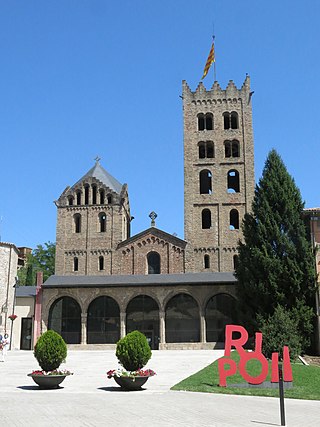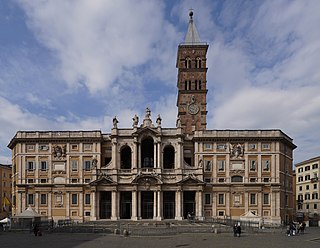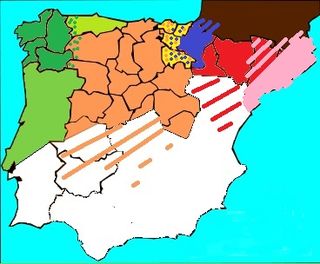Contents
This article needs additional citations for verification .(April 2019) |
| 1020s .1030s in architecture. 1040s |
| Architecture timeline |
This article needs additional citations for verification .(April 2019) |
| 1020s .1030s in architecture. 1040s |
| Architecture timeline |

Romanesque architecture is an architectural style of medieval Europe that was predominant in the 11th and 12th centuries. The style eventually developed into the Gothic style with the shape of the arches providing a simple distinction: the Romanesque is characterized by semicircular arches, while the Gothic is marked by the pointed arches. The Romanesque emerged nearly simultaneously in multiple countries ; its examples can be found across the continent, making it the first pan-European architectural style since Imperial Roman architecture. Similarly to Gothic, the name of the style was transferred onto the contemporary Romanesque art.

Vic is the capital of the comarca of Osona, in the province of Barcelona, Catalonia, Spain. Vic is located 69 km (43 mi) from Barcelona and 60 km (37 mi) from Girona.

Hildesheim is a city in Lower Saxony, in north-central Germany with 101,693 inhabitants. It is in the district of Hildesheim, about 30 km (19 mi) southeast of Hanover on the banks of the Innerste River, a small tributary of the Leine River.

Mainz Cathedral or St. Martin's Cathedral is located near the historical center and pedestrianized market square of the city of Mainz, Germany. This 1000-year-old Roman Catholic cathedral is the site of the episcopal see of the Bishop of Mainz.

The Church of St. Michael is an early-Romanesque church in Hildesheim, Germany. It has been on the UNESCO World Cultural Heritage list since 1985 because of its outstanding Romanesque architecture and art. It is now a shared church, the main church being Lutheran and the crypt being Roman Catholic.

Hildesheim Cathedral, officially the Cathedral of the Assumption of Mary or simply St. Mary's Cathedral, is a medieval Roman Catholic cathedral in the city centre of Hildesheim in Lower Saxony, Germany, that serves as the seat of the Diocese of Hildesheim. The cathedral has been on the UNESCO World Cultural Heritage list since 1985, together with the nearby St. Michael's Church because of its unique art and outstanding Romanesque architecture.

Bernward was the thirteenth Bishop of Hildesheim from 993 until his death in 1022.

Oliba was the count of Berga and Ripoll (988–1002), and later abbot of the monasteries of Santa Maria de Ripoll and Sant Miquel de Cuixà (1008–1046) and the bishop of Vic (1018–1046). He is considered one of the spiritual founders of Catalonia and perhaps the most important prelate of his age in the Iberian Peninsula. Oliba was a great writer and from his scriptorium at Ripoll flowed a ceaseless stream of works which are enlightening about his world. Most important are the Arabic manuscripts he translated into Latin for the benefit of 11th century and later scholars.

Speyer Cathedral, officially the Imperial Cathedral Basilica of the Assumption and St Stephen, in Latin: Domus sanctae Mariae Spirae in Speyer, Germany, is the seat of the Roman Catholic Bishop of Speyer and is suffragan to the Roman Catholic Archdiocese of Bamberg. The cathedral, which is dedicated to St. Mary, patron saint of Speyer and St. Stephen is generally known as the Kaiserdom zu Speyer. Pope Pius XI raised Speyer Cathedral to the rank of a minor basilica of the Roman Catholic Church in 1925.

One of the first streams of Romanesque architecture in Europe from the 10th century and the beginning of 11th century is called First Romanesque or Lombard Romanesque. It took place in the region of Lombardy and spread into Catalonia and into the south of France. Its principal decoration for the exterior, bands of ornamental blind arches are called Lombard bands. It was characterized by thick walls and lack of sculpture in facades, and with interiors profusely painted with frescoes.

The Monastery of Santa Maria de Ripoll is a Benedictine monastery, built in the Romanesque style, located in the town of Ripoll in Catalonia, Spain. Although much of the present church is 19th century rebuilding, the sculptured portico is a renowned work of Romanesque art.

Catholic Marian churches are religious buildings dedicated to the veneration of the Blessed Virgin Mary. These churches were built throughout the history of the Catholic Church, and today they can be found on every continent including Antarctica. The history of Marian church architecture tells the unfolding story of the development of Catholic Mariology.

A dwarf gallery is an architectural ornament in Romanesque architecture.

Santa Maria de Gualter is a Romanesque Benedictine monastery near the village of Gualter in the municipality of La Baronia de Rialb, Catalonia, Spain.

St. Godehard is a church in Hildesheim, Germany, formerly the church of a Benedictine abbey. It remained almost unaltered through the centuries and was not damaged much in World War II. It is one of the most important examples of Romanesque architecture in Germany.

Spanish Romanesque designates the Romanesque art developed in the Hispanic-Christian kingdoms of the Iberian Peninsula in the 11th and 12th centuries. Its stylistic features are essentially common to the European Romanesque although it developed particular characteristics in the different regions of the peninsula. There is no Romanesque art in the southern half of the peninsula because it remained under Muslim rule (Al-Andalus). The examples of Romanesque buildings in the central area of the peninsula are sparse and of the latest period, with virtually no presence south of the Ebro and the Tagus. Most Romanesque buildings can be found in the northern third of the peninsula. Romanesque art was introduced into the peninsula from east to west, so scholars have usually defined regional characteristics accordingly: the "eastern kingdoms" comprising the Pyrenean areas, Catalan Romanesque, Aragonese Romanesque and Navarrese Romanesque, and the "western kingdoms" comprising Castilian-Leonese Romanesque, Asturian Romanesque, Galician Romanesque and Portuguese Romanesque.